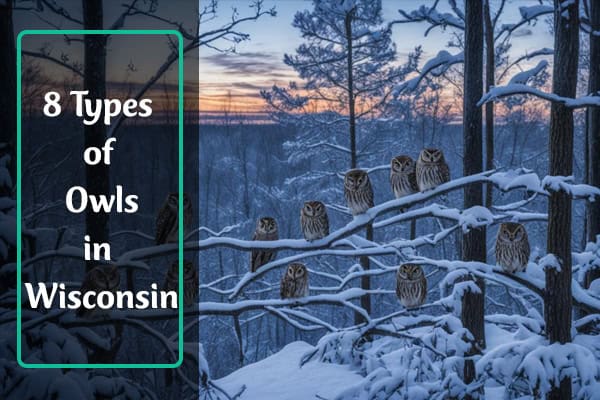Spotting 8 Types of Owls in Illinois (ID Guide With Pictures)
Wondered about the owls living in Illinois? This state is home to 9 out of the 19 owl species in the U.S. Making it a dream for bird lovers. From the powerful Great Horned Owl to the mysterious Snowy Owl, we will showcase the 8 top owl species spotted in Illinois. You’ll be amazed by their special features, how they act, and where they live. This guide is great for anyone interested in birds or wondering about local owls. With it, you’ll learn to love and respect Illinois owls.
Here we’ll learn about 8 different types of owls in Illinois!!!
1. Great Horned Owl
- Scientific name: Bubo virginianus
- Life span: 25 – 50 years
- Size: 43 to 64 cm
- Weight: 1200 to 1600 g
- Wingspan: 91 to 153 cm
- Status: Least Concern
The Great Horned Owl is a magnificent bird found in North America, even in Illinois. You can spot it by the tufts on its head and its mix of brown and gray feathers. It lives in places like deserts and forests. This owl spreads out its wings up to 5 feet wide. You can recognize it by its deep hoots echoing through the night.

Habitat and Nesting Habits
The Great Horned Owl is quite picky about its nests, often taking over the homes of other big birds or using tree holes. Sometimes they choose places like cliff ledges or even human buildings. Breeding starts early, around January. The male picks the home and then dances to win his mate’s heart.
Diet and Hunting Behavior
This owl eats a lot of different animals; nothing much can escape its sharp talons. It feeds mainly at night, thanks to its sharp eyes and silent flight. Surprisingly, it doesn’t have a good sense of smell, which is rare for birds. This means it can hunt skunks without smelling bad afterward.
The Great Horned Owl is truly fascinating in its size, skills, and where it can live. It is a key part of North American wildlife, making its ecosystems balanced and rich.
2. American Barn Owl
- Scientific name: Tyto furcata
- Life span: 10 years
- Size: 34 to 38 cm
- Weight: 400 to 600 g
- Wingspan: 29 to 36 cm
- Status: Least Concern
The American Barn Owl stands out in Illinois with its distinctive pale, heart-shaped face. This unique look has earned it names like “Ghost Owl” and “Monkey-faced Owl.” Known for their incredible sense of hearing, they hunt in the dark for small rodents. This sets them apart from many other birds.
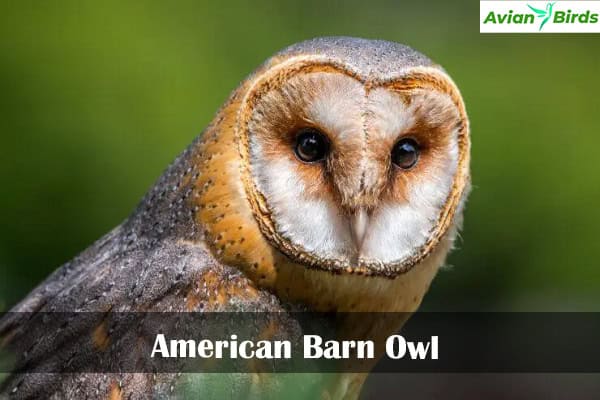
These owls don’t fly south for the winter. They stay in Illinois, preferring old barns and tall structures like church steeples. Their eerie screeches and silent moth-like flight make them both mysterious and fascinating to see.
In Illinois, Barn Owls are struggling, facing an endangered status. But, efforts are underway to help them recover. One plan is to reevaluate how we classify them, especially in areas where they’re now more common.
Nest boxes and protected grasslands are key to Barn Owl survival. These efforts help sustain the prey they feed on. Public education and research also make a big difference. By supporting these measures, we can make a real impact on Barn Owls in Illinois.
3. Eastern Screech-Owl
- Scientific name: Megascops asio
- Life span: 8 to 10 years
- Size: 16 to 25 cm
- Weight: 121 to 244 g
- Wingspan: 46 to 61 cm
- Status: Least Concern
The Eastern Screech-Owl is a small but captivating bird found in the east, including Illinois. It has two main color types, gray and reddish-brown. The color depends on where they live. Screech-Owls have ear tufts they can move. They use them to talk and show their feelings.

Breeding and Nesting Behavior
Eastern Screech-Owls are good at living in many places, including cities. They make nests in tree holes, old woodpecker holes, or even in man-made spots like nest boxes or on street lamps. These owls stay as couples for life. The male chooses the nest and does a special dance to attract a mate.
Diverse Diet and Feeding Habits
These owls eat many things, like small animals, birds, bugs, and even some reptiles and amphibians. They hunt at night with their great hearing and sight. After eating, they throw up parts they can’t digest.
Eastern Screech-Owls are loved in many Illinois neighborhoods because of their looks and how they live. They are a joy to watch and show the great variety of birds in the state.
4. Long-eared Owl
- Scientific name: Asio otus
- Life span: 10 to 27 years
- Size: 31 to 40 cm
- Weight: 160 to 435 g
- Wingspan: 86 to 102 cm
- Status: Least Concern
The Long-eared Owl is a standout in Illinois’ owl species. It masters blending in with its surroundings. This owl has distinctive long ear tufts. These tufts, in addition to its mottled plumage, make it hard to spot even in the open.
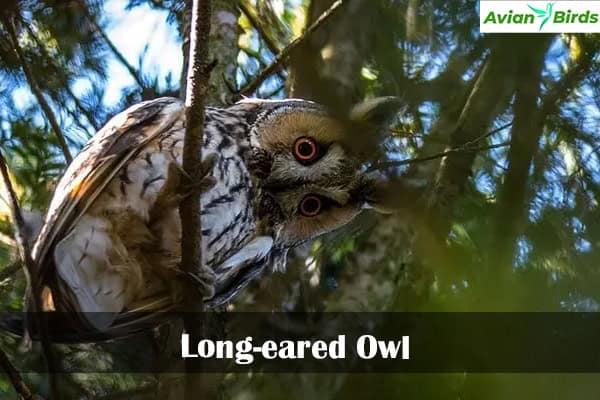
Distinctive Features and Appearance
The owl’s long, slender ear tufts are its most eye-catching feature. They can grow up to an inch and a half long. With its muted colors, this owl fits into the trees perfectly.
Despite being hard to see, you might hear them. Their evenly spaced hoots can travel a mile.
Mating Rituals and Nesting Strategies
Long-eared Owls are quite social. They often live in groups. In spring, males show off to females with special dances and calls.
They don’t make their nests, though. Instead, they use nests left by other big birds. This is where they have and raise their babies.
This owl’s ability to hide, along with its social life and nesting habits, make it special in Illinois. They are key predators in the woods, and they are experts in staying hidden.
5. Short-eared Owl
- Scientific name: Asio flammeus
- Life span: 12 years
- Size: 34 to 43 cm
- Weight: 206 to 475 g
- Wingspan: 85 to 110 cm
- Status: Least Concern
Illinois is home to many owl types. The Short-eared Owl is truly captivating and mysterious. It’s known for its unique brown and buff colors, dark eyes, and short ear tufts. Unlike most owls, it’s active during the day. But, it’s hard to spot because of its camouflage and love for open places like grasslands.

Breeding Habits and Nesting Behavior
Short-eared Owls like to be around others. They form loose groups when breeding. These owls don’t make nests, laying eggs on the ground instead. They choose spots with thick plants for cover.
They don’t stick with one mate, looking for new ones every breeding season. This is different from many other owls.
Hunting Techniques and Prey
Short-eared Owls are great at hunting in the open. They fly low, catching small rodents by surprise. Their diet includes rabbits, weasels, and small birds like larks.
They can live in many open places. This makes them special members of Illinois’ owl family.
These owls in Illinois are endangered. Their numbers depend a lot on how much food they find. They’re important because they help control rodent numbers, playing a big role in nature.
6. Northern Saw-whet Owl
- Scientific name: Aegolius acadicus
- Life span: 7 to 17 years
- Size: 17 to 22 cm
- Weight: 54 to 151 g
- Wingspan: 42 to 56.3 cm
- Status: Least Concern
The Northern Saw-whet Owl is a wonder of nature. It’s among the smallest owl species in Illinois. Yet, it shines with great hunting skills. You can spot it by its round head and bright yellow eyes. Its dark brown body has white streaks and spots. And its call sounds like a saw being sharpened on a whetstone.
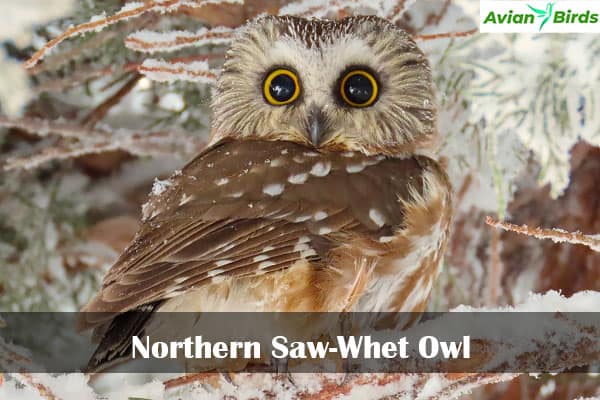
Breeding and Nesting Habits
The Northern Saw-whet Owl doesn’t stick to one mate. The females sometimes mate with several males in one season. They like to make their nests in empty woodpecker holes or nest boxes put up for them. In the family, the females take care of the eggs and young ones. The males provide food by hunting.
Diet and Hunting Strategies
Despite being small, these owls are excellent hunters. They eat small animals like voles and mice. They sometimes snack on insects, small birds, or even fellow little owls. Their great hearing and silent flying help them catch their prey. They might jump from a tree or swoop down quietly from above.
| Characteristic | Measurement |
|---|---|
| Body Length | 7-9 inches |
| Wingspan | 18-24 inches |
| Weight | Around 80 grams |
| Conservation Status | Least Concern (IUCN 3.1) |
Watching the Northern Saw-whet Owl is a real treat. Its small size and big skills make it stand out. Anyone who loves nature or birds will treasure seeing this amazing owl.
7. Snowy Owl
- Scientific name: Bubo scandiacus
- Life span: 10 to 28
- Size: 52.5 to 64 cm
- Weight: 1706 to 2426 g
- Wingspan: 146 to 183 cm
- Status: Vulnerable
The Snowy Owl is incredibly beautiful, mostly white, and a rare sight in Illinois. They visit from the Arctic in the winter. You can spot them with their bright yellow eyes and 5-foot wings. Bird lovers get really excited when they see one.
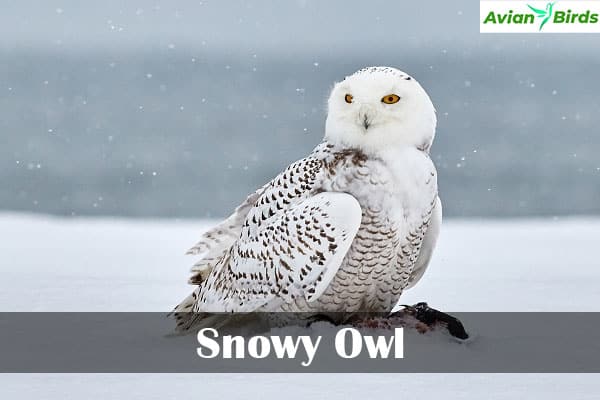
What makes Snowy Owls special is they’re not just nighttime hunters. They might hunt during the day, too. It all depends on the season and where they can find their favorite food, lemmings. Although spotting one in Illinois is rare, their presence is quite a show.
Snowy Owls are the heaviest owls in North America, weighing around four pounds. Compare that to the Great Horned Owl, which is about three pounds. In some years, they travel far south in the U.S., even to Texas and Florida.
In northern Illinois, you can find Snowy Owls in certain open fields and areas by rivers. This winter, where there are more sightings than usual is called an irruption year. This means more chances to see them. Yet, in the current winter, even though it’s an irruption year, only two have been seen in northern Illinois. Contrast this with over twenty that were found in late February 2022.
| Owl Species | Average Weight | Habitat in Illinois | Sightings in Current Winter |
|---|---|---|---|
| Snowy Owl | 4 pounds | Open farm fields in western Fox River watershed | 2 reported |
| Great Horned Owl | 3 pounds | Throughout Illinois | N/A |
| Short-eared Owl | 13-17 inches tall | Statewide, classified as State Endangered | N/A |
Though rare, Snowy Owls are worth looking for in Illinois in winter. They’re known for their stunning looks and hunting style. A Snowy Owl sighting can make any bird lover’s day.
Check Our Previous Articles:
8. Barred Owl
- Scientific name: Strix varia
- Life span: 8 years
- Size: 40 to 63 cm
- Weight: 610 to 1,150 g
- Wingspan: 96 to 125 cm
- Status: Least Concern
Barred Owls don’t move around much and have smaller home areas compared to other owls. In a study where 158 owls were tagged and later found, none had moved more than 6 miles from where they were first seen. Even though they don’t travel far, these owls are common in most eastern states and southern Canada. They have brownish-grey feathers with dark stripes underneath.

Barred Owls, like American Barn Owls, form lifelong pairs. During their courtship, males show off to females by nodding and bowing with spread wings, hoping for acceptance. This courtship usually starts in February. After mating, the owls build their nests in hollow tree trunks in dense, dark forests.
In Illinois, Barred Owls mainly eat small mammals such as mice and voles, along with other small animals like birds, reptiles, and insects. Sometimes, they go after larger prey like rabbits and squirrels. These owls are opportunistic hunters, meaning they eat whatever is available, including dead animals. They hunt both day and night, using sound to find their prey. They typically hunt around forest rivers and wetlands







